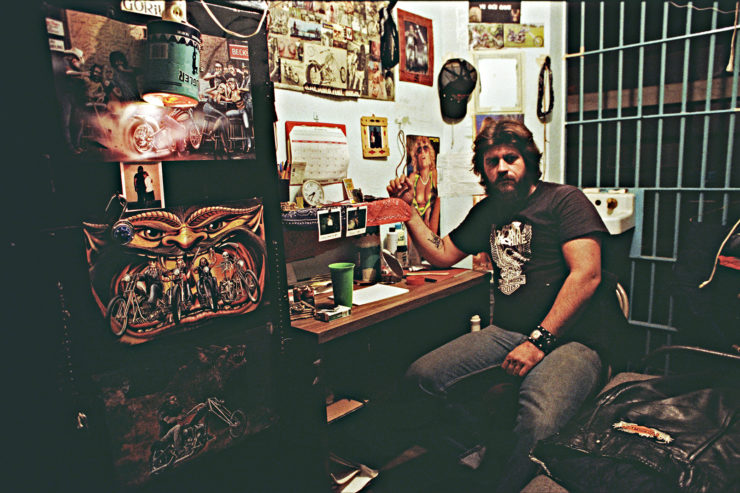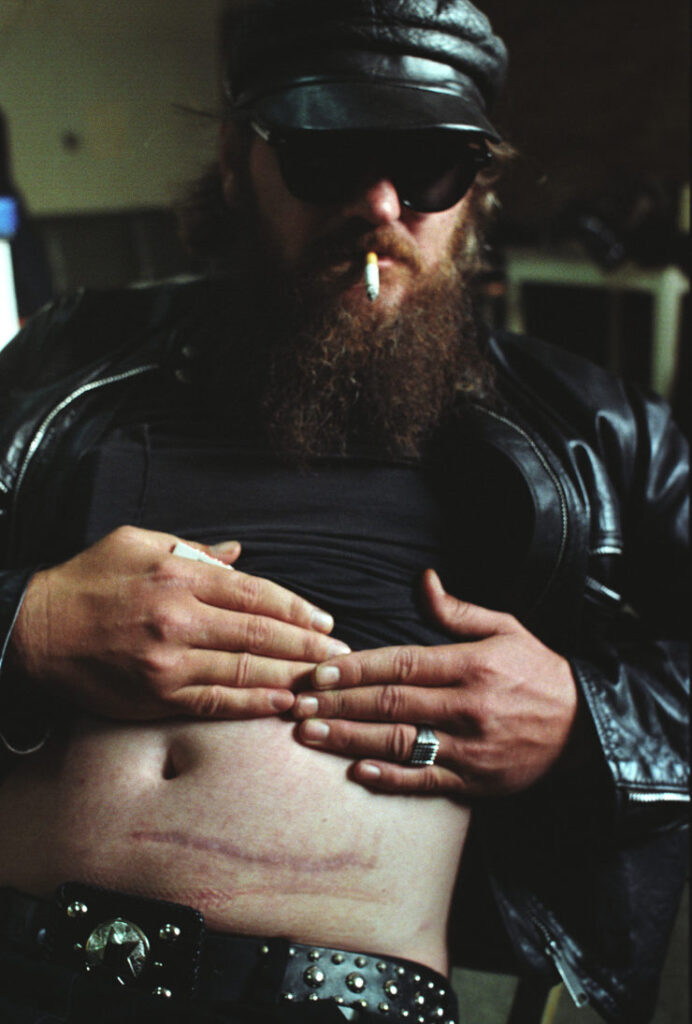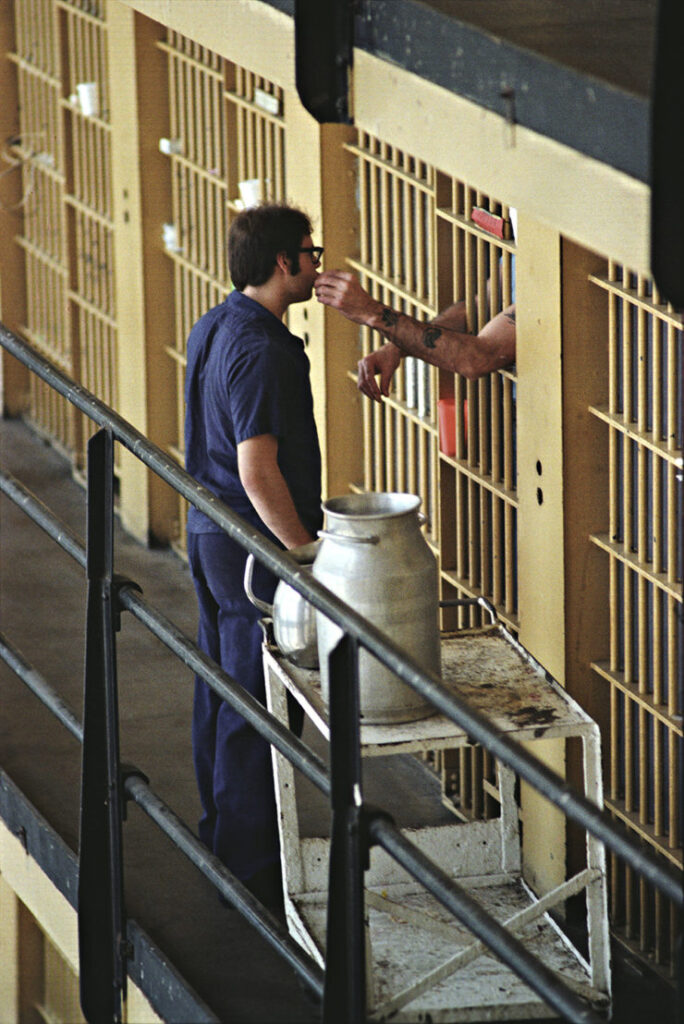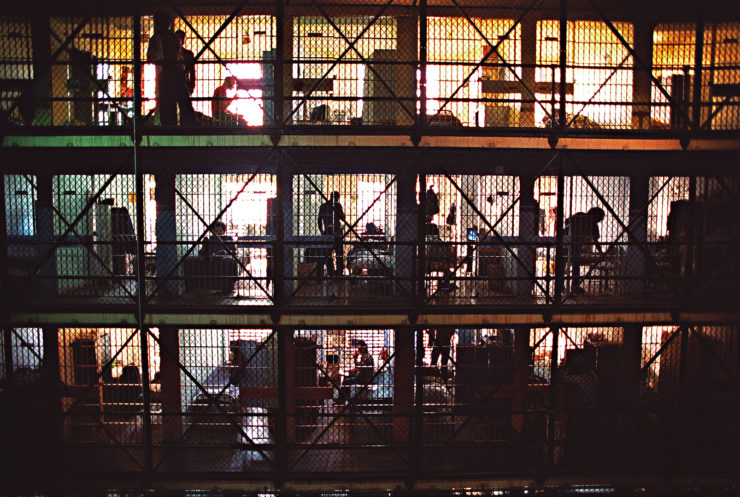Taro Yamasaki quit journalism school in 1968 to go to New York and become a photojournalist; he thought he’d become successful very quickly. Although he did do some documentary photography, for the next nine years his resume also included working in a childcare center, assisting a fashion photographer, sorting snapshots at a retail store, driving a taxi, working in construction and doing carpentry.
Finally, in 1977, he landed a job at the Detroit Free Press as a photographer.
As low man on the totem pole, he found himself shooting home interiors and food. Then the Free Press changed executive editors, and Yamasaki got the chance to do something new. He said he wanted to go inside Jackson State Prison, which, with 5,700 inmates, had for decades been the world’s largest walled prison.
Celebrating 100 Years of Excellence in Journalism and the Arts
Join us at Harvard’s Sanders Theatre on Sept. 10-11 as we celebrate 100 years of the Pulitzer Prize and explore the theme “Power: Accountability and Abuse” with two-dozen Pulitzer winners. Visit the Nieman Foundation’s Pulitzer Centennial event page to learn more.
In the weeks before the event, Storyboard is showcasing great storytelling from some of the winners, like this one.
Over seven days in November 1980, the Free Press ran 52 of Yamasaki’s remarkable photographs, which would later win the 1981 Pulitzer Prize for Feature Photography. They managed to reveal not just the power (and weakness) of the state, but “the power of the inmates in the prison over the other prisoners,” Yamasaki says. “That’s an extremely important part of it.”
Yamasaki went on to chronicle a number of other prisons — and famous prisoners like Leonard Peltier. Now 70, he recently has been involved in a project to photograph surviving family members of undocumented workers who died in the Sept. 11 attacks at the World Trade Center (a building his father designed), in an effort to help them gain legal residence in the U.S.
He spoke with me about his Pulitzer Prize-winning project, and we did an unusual annotation: of images, not words. The answers have been edited for length and flow.
How did you decide you wanted to do this story?
I wanted to be a real photojournalist. I was working at the Free Press pretty much illustrating writers’ stories. A new executive editor came in, David Lawrence. David really cared that people were doing the job they wanted to be doing. He actually went to every department and spoke to all of us and asked, “Are you feeling fulfilled by your job?”
What I said to him was I really wasn’t. What he said was, “Well, pick a story and tell me about it, and I’ll tell you if I want you to do it.” The first story I picked was going inside Jackson prison and showing what life inside there was like.
This was getting towards the fall of 1980, and that summer there was a lot of violence in Jackson and guys were stabbed. The prison writer wrote a story saying that the police were rounding up gangs in Pontiac and Detroit and the young gang guys were going into prison and terrorizing all the old guys. That’s pretty much the story the warden and the assistant warden gave this reporter.
This was not what I had heard about prison, that the young guys were terrorizing the old guys, because it’s always the other way around. You go into a prison and you’re called a fish, because of the way you wiggle around and look nervous. Guys will start challenging you immediately. They’re usually the guys who’ve been there awhile and gotten power by intimidation, really.
How interested were you in the power structures there?
It’s all about power in a prison. Especially when the funds are low, and the funds were low in Michigan prisons, there’s not a lot of rule of law. The guards, I hate saying this, but the guards are trying to keep an outward level of calm, but basically they don’t want anybody to escape. And it seemed to me at least that there was very little being done to protect the inmates and not a whole lot to protect the guards. There are very few guards that were enforcing the rules that I saw, because of the consequences when they tried to enforce the rules. And the consequences are, there would be active attempts to eliminate the guards who tried to enforce the rules.
My questions are in red, his responses in blue.
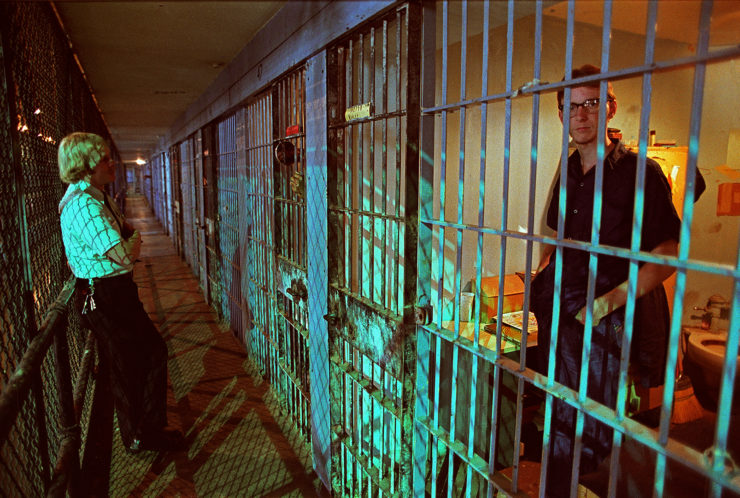
Inside Jackson
By Taro YamasakiPublished in November 1980 in the Detroit Free Press (plus an unpublished one)
Do you remember how you felt about actually going inside? I remember seeing a Robert Redford film about prison [“Brubaker”] a couple of days before I was actually going to go inside. I watched that thing and I thought, “I must be insane. I can’t believe I said I was going to do this.” Then I started getting really nervous. Jackson, of all the prisons I’ve been in, and I’ve been in a whole bunch of them since then, because after I did the Jackson story, people gave me prison stories to do. There was nothing like Jackson, ever.
What was your motivation as a storyteller? I wanted to tell the story of what it’s like to live in Jackson prison. I was looking for extreme prison overcrowding, the issue that got me into the prison in the first place. But I was more interested in the danger of the place, and of course the overcrowding enhanced the danger greatly. The prison was supposedly very crowded, and there was a proposal on the November ballot for more funding because of overcrowding. Where I was, I saw one guy in a cell and I saw empty cells. So I can’t say that this prison is dangerous because it’s overcrowded. The prison is dangerous because it’s a prison. What I saw, guys are getting ready for combat every single morning when they walk out of their cell. They have to get themselves in a mindset of “I’m not going to let anybody push me; I’m going to be either the aggressor or somebody that everybody knows if you try to push me, you’ll pay the consequences.” That’s a pretty tough mindset to start every day with.
On that first day, did you bring with you your camera and notepads, or just say, I want to get the feel of the yard? I had my camera and I had my pad and I was talking to people, I was taking notes, I was writing their names and their numbers down. I wasn’t taking a whole lot of photographs. Very often you don’t have the time to get the feel of the place -- you just have to start photographing. But I felt like I had the time. They said, “You can be in here as long as you want to be in here.” I wasn’t madly photographing, no. I was trying to talk to people and trying to let people know what I was doing in there. The prisoners were pretty surprised. They were not used to seeing a journalist walking around inside the walls. If you were going to talk to a journalist, you’d get taken to a holding cell somewhere inside the administration building. You’re not walking around inside the yard. People were very interested in what I was doing. Especially since I had a camera they could take. It turned out the guards really wanted me to show how dangerous it was in there, as did the inmates. Very soon, guys started pulling up their shirts when they saw me and they would say, “Got my armor on.” They had a book or a thick magazine tucked in the front of their pants, and a book or magazine tucked in the back of their pants. That would stop a lot of the weapons that were in there. It’s pretty interesting when everybody is walking around with “armor” on.

